Editor's note: This text-based course is a transcript of the webinar, Naturally Build Reflex Activities Into The School Day, presented by Megan Paben, MOT, OTR/L, ASD-CS.
Learning Outcomes
- After this course, participants will be able to:
- identify common reflexes that could be seen in the school setting.
- identify deficits that retained reflexes may cause in the school setting.
- identify key exercises to support occupation that can be embedded into the school day.
Introduction
Thank you so much for joining us today. Today, we will talk about how to build reflex activities into the school day naturally. Being in a school model, we have to think about what can we do to support teachers, and get our kids moving to be their best to access the educational environment.
Primitive Reflexes
- Primitive reflexes are motor patterns we are born with and typically integrate throughout infancy.
- Primitive reflexes are repetitive, autonomic movements.
Primitive reflexes are motor patterns that are integrated throughout infancy that are repetitive and autonomic. We may often wonder what is underlying a child's movements or behaviors. Today, we will discuss some relationships between certain movements and reflexes.
- Primitive reflexes originate in the brainstem and are essential for the development of motor development, muscle tone, and sensory development.
- Retained reflexes can lead to developmental delays, and sensory, learning, and behavioral difficulties.
- Behavioral difficulties can include anxiety, outbursts, impaired social skills, and frustration.
Primitive reflexes originate in the brainstem and are essential for motor and sensory development, including muscle tone. Retained reflexes can lead to developmental delays as well as sensory, learning, and behavioral difficulties. I often see this within the school setting, and I also observed this when I worked in a medical clinic. We would have to parse all the different deficits and do some neuromotor testing. I would see contributing factors and have to problem-solve how to approach those.
In the classroom, we want to think about things we can naturally provide to the teachers and learners to set them up for success. Behavioral difficulties may include anxiety, outbursts, impaired social skills, and frustration.
Why Are There Retained Reflexes?
- Container kids have a lack of natural movement
- Birth history
- C-Section?
- Trauma
- Diagnosis
- Toxin exposure
- Decreased tummy time, lack of crawling
- Chronic ear infections
Many factors contribute to retained reflexes. Babies are placed in containers and lack natural movement to integrate these reflexes. In today's society, we move children from container to container, like car seats, swings, Exersaucers, Boppies, Bumbos, etc. They are rarely in prone extension on the floor for tummy time, which is crucial. A lack of crawling may also play a role.
Birth history may be another factor. Was this individual born via C-section, or were there other traumas in utero?
A child may also have been exposed to toxins in utero or have parents binging for days and leaving them in one position for days.
Diagnoses may also pay a part. For example, a child may have CP and not experience some of the natural movements.
Lastly, a child with chronic ear infections may have vestibular issues and impaired movement patterns.
Reflexes We Will Discuss
- Moro Reflex
- Palmar Grasp Reflex
- Asymmetrical Tonic Neck Reflex (ATNR)
- Spinal Galant Reflex
- Tonic Labyrinthine Reflex (TLR)
- Symmetric Tonic Neck Reflex (STNR)
- Landau Reflex
We are going to review the above reflexes today.
Moro Reflex
- Startle reflex
- Fight or flight reaction
- Sympathetic nervous system response
- Gravitational insecurity
- Good bonding
- Ability to organize
- Self-regulation
- Good concentration
The Moro reflex is also referred to as the startle reflex. It is part of a fight or flight reaction, a sympathetic nervous system response. It is part of gravitational insecurity and impacts bonding when the baby comes into this world. It allows them to organize, self-regulate, and concentrate.
As a disclaimer, most of the pictures I am going to show are of my son as well as some of my nieces and nephews.
Figure 1 shows the Moro reflex.

Figure 1. Example of the Moro reflex.
Palmar Grasp Reflex/Robinson Hand Grasp Reflex
- Autonomic flexion of the fingers to grab when the palm is stimulated.
- Gross hand motor coordination
- Grasping and holding objects
- Manipulation of bigger objects
- Later development of fine motor coordination
The palmar grasp reflex is also called the Robinson hand grasp reflex in the MNRI method. It is the autonomic flexion of the fingers to grab when that palm is stimulated. The palmar grasp reflex impacts gross motor coordination in the hand for grasping and holding objects and manipulating bigger objects.
Figure 2 shows my son and niece. She is demonstrating a palmar grasp pattern as he has stimulated her palm.

Figure 2. Example of a palmar grasp reflex.
Some individuals may still have a residual palmar grasp reflex impacting their ability to handle and manipulate objects smoothly.
Asymmetrical Tonic Neck Reflex (ATNR)
- Assists with movement through the birth canal at delivery
- Important for contralateral movements
- The limbs extend on the same side of the body the head turns toward while the limbs on the opposite side flex
- Strengthens development of unilateral movements
The ATNR is the asymmetrical tonic neck reflex. This one assists with movement throughout the birth canal at delivery. It involves contralateral movement patterns, similar to things like crawling and walking patterns. The limbs extended on the same side of the body, and they turn the head. It also helps to strengthen unilateral movements.
- Provides foundation for
- Hemispheric brain dominance
- Speech and language development
- Supports postural control
The ATNR provides the foundation for hemispheric brain dominance. It is also necessary for speech and language development and postural control.
My son is adopted. As an OT, we would work on different things if I noticed something. For example, bedwetting can be associated with a retained ATNR. Figure 3 shows this pattern in my nephew.
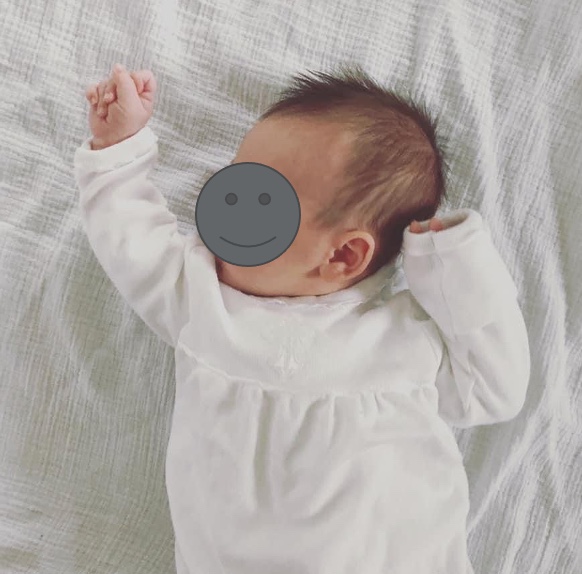
Figure 3. Example of an ATNR.
Here you can see my nephew Ben with the classic, extended side where the head is looking and flexion in the contralateral side.
Spinal Galant
- Important during the birthing processing
- Helps facilitate movement during descending the birth canal
- Helps activate the semicircular canals
- Enhances development of the proprioceptive system
- Provides a solid foundation for standing and walking
The next reflex is the spinal galant. This is also important during the birthing process, as it helps facilitate movement during the descension into the birthing canal. It helps to activate the semicircular canals in the ears to support vestibular movement later in life. It also enhances the development of the proprioceptive system, which goes hand-in-hand with the vestibular system. The spinal galant provides a solid foundation for standing and walking.
My son is in Figure 4.
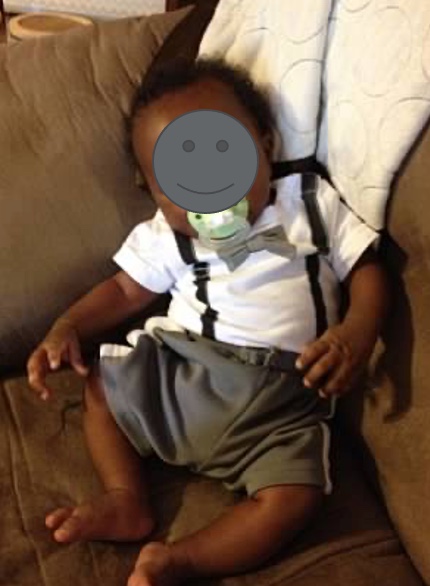
Figure 4. Example of spinal galant.
In this particular instance, my husband ended up stroking the side of him when he was posing him, and he flexed toward that stimulus.
Tonic Labyrinthine Reflex (TLR)
- Foundational for postural stability for large muscle groups
- Facilitates total body flexor tone for proper development. This is why tummy time is important.
The tonic labyrinthine reflex is foundational for the postural stability of large muscle groups and is seen in Figure 5.

Figure 5. Example of tonic labyrinthine reflex.
Symmetrical Tonic Neck (STNR)
- Foundational for crawling
- Helps to fire both brain hemispheres
- Reinforces bilateral coordination
- Improves binocular vision and hearing
The symmetrical tonic neck reflex is next. It facilitates flexor tone for proper development. This is why that tummy time is important. I even encouraged this in the adult stroke population.
Reflexes should naturally integrate at different durations throughout their infancy period. I read that certain reflexes should be integrated around the age of one, but we are seeing a delay due to the aforementioned lack of mobility with containers.
When we were babies, we spent a lot of time on blankets. I talk to parents about the importance of this all of the time.
In '92, the Academy of Pediatrics started the Back to Sleep campaign. Now they say, "Back to Sleep, Tummy to Play" because many parents were afraid to put infants on their stomachs. We can arm caregivers with this updated information. Many PTs are also encouraging tummy time for babies with torticollis.
Some teachers now allow flexible seating, even laying on stomachs, during reading and other circle activities.
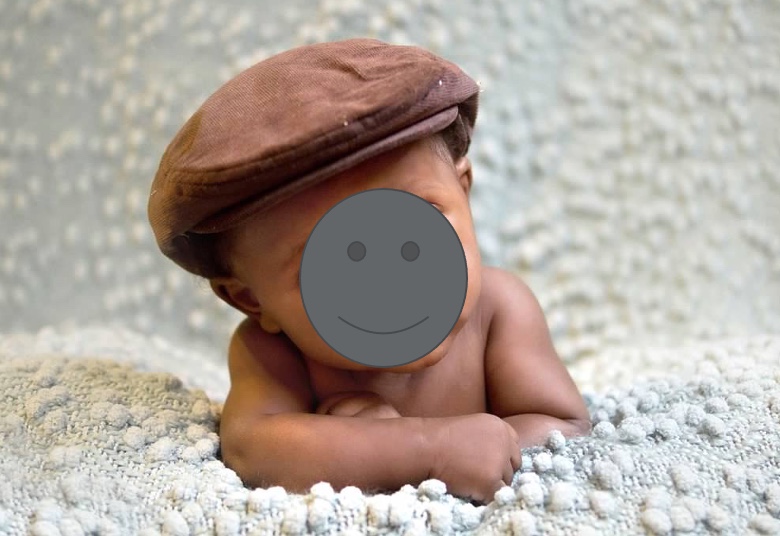
Figure 6. Example of tummy time and weight-bearing.
We must encourage prone positioning and weight-bearing to provide that crucial input and neuromotor processing.
Landau Reflex
- Necessary for postural development
- Helps to integrate motor actions (decreases clumsiness)
- Emotional regulation
- Visual perception
The landau reflex is necessary for postural development. It helps to integrate motor actions to decrease clumsiness, helps with emotional regulation, and supports visual perception.
I am a crisis prevention trainer for the district, and we look a lot at social-emotional learning and regulation. We see many kids in crisis, with many unable to regulate themselves in school.
Figure 7 shows a version of Landau with the child's head extended and legs slightly flexed.
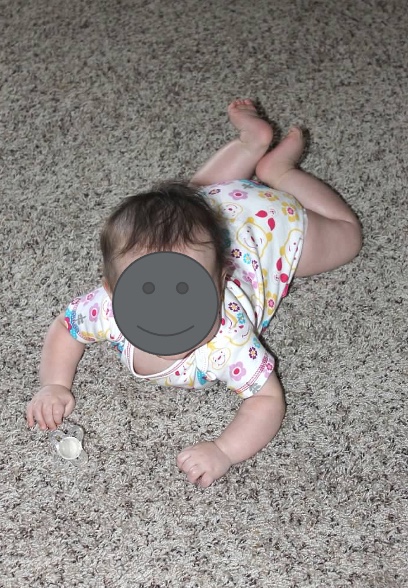
Figure 7. Example of a child with head in extension and legs flexed in prone position.
What Does Retention Look Like?
- Moro Reflex
- Palmar Grasp Reflex
- Asymmetrical Tonic Neck Reflex (ATNR)
- Spinal Galant Reflex
- Tonic Labyrinthine Reflex (TLR)
- Symmetric Tonic Neck Reflex (STNR)
Now that we have seen some examples of these reflexes, let's discuss what we may see in the classroom.
Moro Reflex Retention
- Excessive anxiety, timid, maladaptive self-protection patterns
- Weakened immune system, allergies
- Gravitational insecurity
- Poor balance
- Hypersensitive to auditory input
A retained Moro reflex may lead to excessive anxiety and maladaptive self-production patterns. They may have weakened immune systems or chronic allergies. I have many kids on my caseload with poor immune systems, and they may have runny noses from September to April.
One child I see has a startle or Moro reflex with gravitational insecurity. Individuals with this may not like the playground or avoid things like swings and slides. They may also have poor balance and difficulty walking in the mulch or shredded tire areas. They may walk the perimeter of the playground to avoid having that unsteady balance.
Children may have toileting issues and not want to sit on the toilet due to gravitational insecurity.
They may also be hypersensitive to auditory input. I have six center-based classrooms, five of which are for social communication. Many children in these classrooms have an autism diagnosis and are sensitive to sounds.
- Poor attention
- Impulsive
- Aggressive
- Fight or flight
With a retained Moro reflex, we may also see poor attention, impulsivity, and aggressiveness. They may often be in fight or flight mode.
- School Impact
- Easily distracted
- Noises in the room bother the learner
- Demonstrates aggressive behaviors
- Dislikes the playground
- Refuses to sit on the toilet (may wet themself)
- Difficulty with the size of the problem
In school, these kids may be easily distracted, like by noises in the room. I worked with a child that was on high alert due to an overhead vent system in our clinic. He looked panicked and was staring with big eyes and a rigid posture. It took me a minute to realize what was triggering him so we could turn the system off. Sometimes, we have to be sensory detectives.
These children may demonstrate aggressive behaviors, as they are hyperaroused. As discussed earlier, they may dislike the playground or refuse to sit on the toilet and wet themselves. One child consistently wet himself until I realized he was afraid to sit on the toilet. To decrease gravitational security, we provided him with a step stool, and we saw a decrease in self-wetting.
The last issue is they often have difficulty with the size of the problem. This is where their reaction to something does not match the size of the problem. Their pencil may break, and they have a huge meltdown.
Palmar Reflex Retention
- Poor manual dexterity
- Excessive pressure on a writing tool due to involuntary flexion of fingers
- Inefficient pencil grip
- Finger fatigue
- Aversion to writing and fine motor tasks
- Tactile aversion
With palmar reflex retention, you can see poor manual dexterity or excessive pressure on a writing tool due to an involuntary flexion of fingers. Many of my kids have a death grip on their writing tools. They also display inefficient pencil grip patterns. There can also be finger fatigue, tightness, decreased writing, or impaired fine motor tasks. There may also be a tactile aversion to the feeling of paper or holding a pencil. Developmentally, they may have avoided crawling because they do not like to touch the floor.
- School Impact
- Poor grasp on writing tools
- Excessive pressure on pencils
- Avoids or fatigues quickly during writing tasks
- Refusal to write
- Refusal to participate in fine motor tasks
- Dysgraphia
- Poor posture
- Speech and language problems
We may also see issues with the palmar reflex within the school setting. They may demonstrate a poor grasp or excessive pressure on writing utensils or fatigue quickly. They may not want to do an activity, and they cannot tell us why. They may also refuse to participate in even the fun fine motor tasks. There can be dysgraphia, poor posture, and speech and language problems.
ATNR Retention
- Hearing
- Decreased eye-hand coordination
- Poor handwriting
- Uncoordinated gait
- Poor balance
- Poor visual motor skills and tracking
- Difficulty crossing midline
- Auditory sensitivity
An ATNR retention may also affect hearing, eye-hand coordination, visual motor skills, tracking, handwriting, balance, and gait. I work with a PT often to problem-solve some of the impacts. If we have concerns about a child's vision, our nursing staff will do a full battery and make a referral. Often, we see deficits with tracking and convergence, crossing midline, and auditory sensitivity. We may have to parse out if issues are due to an ATNR, or if it is another issue, like changes in our muscles due to technology use.
- ATNR School Impact
- Handwriting difficulties
- Problems with math and reading
- May fall off a chair
- Difficulty with eye-hand coordination activities, so catching tasks in PE
For the school impact, we may see handwriting difficulties and math and reading problems. With a retained ATNR, we may see difficulty tracking across a page or copying off the board. I have seen children turn their heads and fall off their chairs.
Eye-hand coordination activities like catching tasks in PE can also be hard. We can work with our PE teachers to provide ideas of how they can support these kids, which I will get into in a minute.
Spinal Galant Retention
- Poor gross motor coordination
- Incontinence
- Discomfort with tight-fitting clothing
- ADHD
- Deficits with auditory processing
- Hyperactivity
- Poor endurance
We can see poor gross motor coordination and incontinence in those with spinal galant retention. They may also have discomfort with tight-fitting clothing, ADHD, auditory processing deficits, and poor endurance.
- Spinal Galant School Impact
- Playground difficulties
- Problems in PE
- Attention to task concerns
- Toileting accidents
- “Busy” kid
- Tactile issues of clothing
- “Clumsy”
How is that going to impact these kids in school? They could have trouble on the playground, problems in PE, deficits in task attention, and toileting accidents. They could be the "busy kids." They may have tactile issues with their clothing and are clumsy.
Tonic Labyrinthine Retention (TLR)
- Poor balance
- Poor spatial awareness
- Poor posture
- Weak muscles
- Poor ability to climb
Those with TLR retention have poor balance, spatial awareness, posture, ability to climb, and weak muscles.
- TLR School Impact
- Difficulties on the playground and play structures
- Toe walking
- Poor balance and spatial awareness
- Difficulty holding still
- Difficulty paying attention
- Speech problems due to forward tongue
- Spatial issues
How is this going to impact them at school? Think about those difficulties on the playground and play structures. The individual may be a toe walker with poor balance and spatial awareness. They may have a difficult time holding still for activities like freeze tag. They may have problems paying attention, speech problems due to a forward tongue, or spatial issues.
STNR Retention
- Poor posture in standing
- Poor coordination
- Freeze posture difficult
- Spatial concepts
- Coordinating proprioception, vestibular, and visual systems
- Poor seated posture
With an STNR, they may have issues with their posture and standing and have poor coordination. Again, they may have trouble playing freeze games, and Simon Says. Spatial concepts are huge, and they may have trouble coordinating the proprioceptive, vestibular, and visual systems. These are the "Big 3," and at the baseline central nervous system learning components.
- STNR School Impact
- Difficulty with freeze games like Simon Says
- Trouble remaining seated
- Difficulty with copying from the board
- Messy eater
- W-Sitter
- Difficulty reading/writing
These kids also have difficulty with freeze games, such as Simon Says and freeze tag. There are many resources available that we can use to pull into our classroom environments to work on this. These children can also have trouble remaining seated. I watched a kid on a wobble stool who needed as much input as possible to maintain his position. We can help teachers problem-solve to give some activities to feed into the system. They may also have trouble copying from the board or be a messy eater. We may see W-sitting to have that extra base of support. Lastly, we will see difficulties with reading and writing.
Landau Reflex Retention
- Poor muscle tone
- Difficulty concentrating
- Delayed motor movement
- Poor posture
- Short-term memory difficulties
- Toe walker
- Attention difficulties
We could see poor muscle tone, difficulty concentrating, delayed motor movement, poor posture, attention issues, and short-term memory difficulties in children with retained landau reflexes. They can also be toe walkers.
- Landau School Impact
- Difficulties in PE
- Difficulties on the playground
- Needs directions repeated or information chunked
- Poor attention to a task
- Depression
School impacts with this include difficulties in PE and on the playground. They may need repeated directions or chunked information. They could also be prone to depression.
Natural Ways to Embed Exercises into the School Day
- Moro Reflex
- Palmar Grasp Reflex
- Asymmetrical Tonic Neck Reflex (ATNR)
- Spinal Galant Reflex
- Tonic Labyrinthine Reflex (TLR)
- Symmetric Tonic Neck Reflex (STNR)
- Landau Reflex
We are now going to talk about natural ways to embed exercises into the school day. In your handout, you will also have these pictures to reference. Feel free to print them. In one of my buildings, we have a sensory or mindfulness room. It has yoga mats down, and some of these images. We can also incorporate movement opportunities in the classroom or walking down the hall.
Let's now go through specific examples for each.
Moro Exercises
- Popcorn
- Partner ball pass in supine
- Lay supine over a ball
- Starfish
- Wrap up/hug yourself because you love yourself
Here are some examples of the Moro reflex. We can have them pretend to be popcorn kernels and then "pop" to stretch out. With a partner, they can pass a ball back and forth with their feet facing each other. One grabs the ball above their head, flexes, and passes it to their feet. The other child does the same thing to grab the ball with their feet from the other. They then grab it with their hands and lie back to put the ball over their head. They synchronize this with each other. They can also lay supine over a ball and sit up. A starfish is stretching their legs and arms out. Lastly, when they are stressed, they can give themselves a hug.
The first example is popcorn in Figure 8.
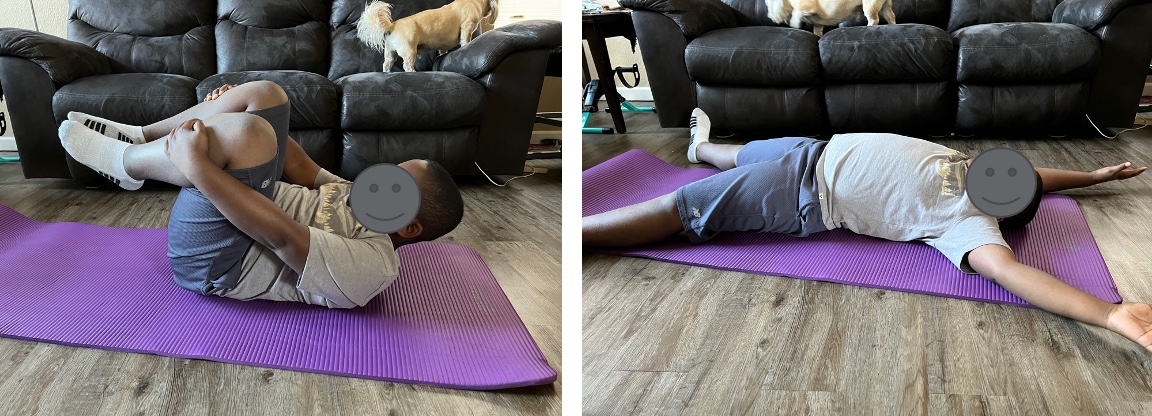
Figure 8. Example of popcorn exercise.
I apologize that my dog decided to be naughty and was all sorts of helpful during these images. The popcorn pose starts in a flexed position with his head and knees up, slowly controlling the movement. They then pop out into a five-point position with both arms and legs out. They can then hold this position. You can have them repeat these positions.
Next is the starfish in Figure 9.
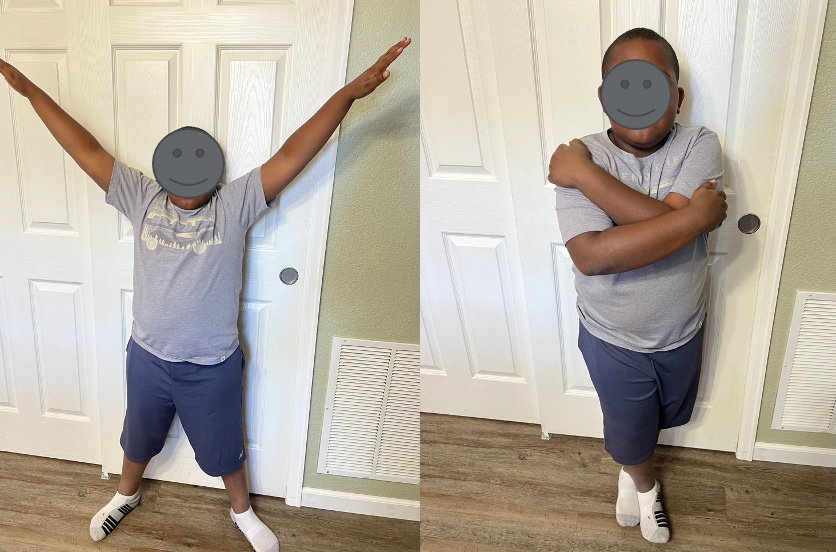
Figure 9. Example of a starfish exercise.
This position is in standing. They take their arms and legs out and then bring them in and cross them over. You can see some asymmetry on my son here, but you want them to get both sides of their body firing. They are crossing the midline and then stretching out. We will have them breathe during this and repeat that a few times. This can be easily incorporated into the class. You can have everybody stand up for a quick break. My teachers like quick and dirty tips that they can sprinkle throughout their day to keep learning going. By doing some of these strategic activities, we are also firing some underlying skills we discussed.
Figure 10 shows, "Hug myself because I love myself."
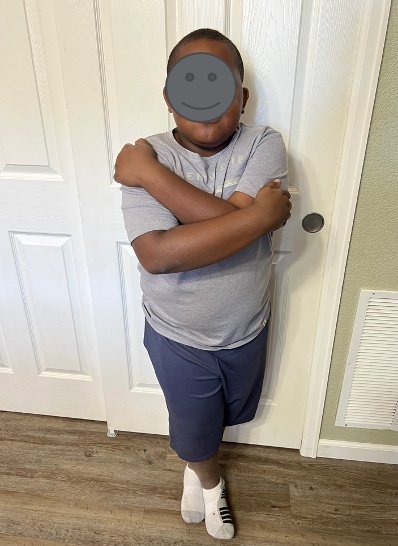
Figure 10. Example of "Hug myself because I love myself."
This is great for a child who is having a hard time. It can also be paired with some breathing. They can do this while standing or seated. You can then ask if they are ready to rejoin their friends. We also want to pair these with positive affirmations.
Palmar Exercises
- Alphabet letter games on hands
- Finger isolation
- Bear walking to provide input to the palms of the hand
- Downward dog
- Squeezing putty
- Opposition
Now let's look at exercises for those palmar exercises. You can do alphabet letter games where you write letters on their hands with their vision occluded and ask them to guess. You can also work on finger isolation games. They can bear walk to provide input to the palms of the hand. For example, "Friends, we are going to bear walk all the way to music today. Are you ready? Our bears are quiet."
We can also do different yoga poses of moving into a downward dog, like in Figure 11.
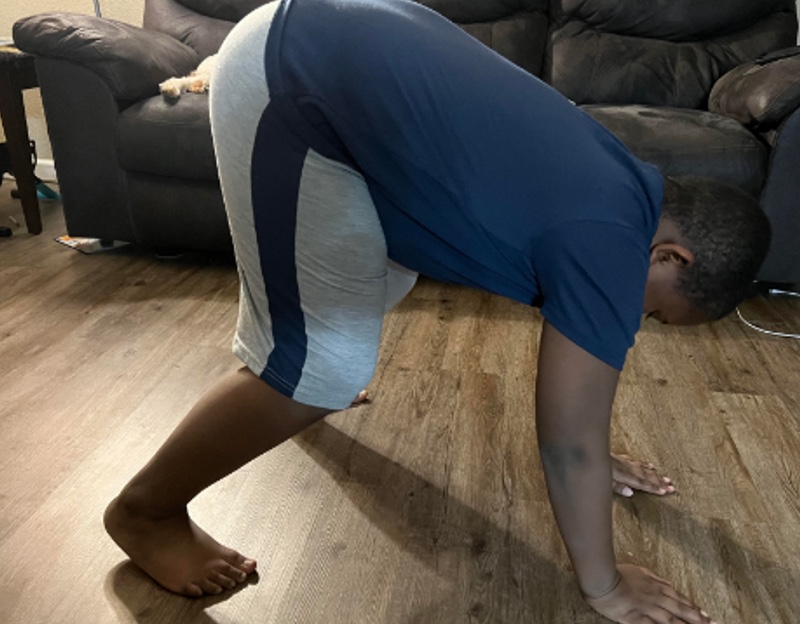
Figure 11. Example of a downward dog yoga pose.
You can see my son is a little tight in Figure 11. While doing this position, watch for any accommodations or compensations that our children will attempt to do. They may have their hands fisted like a gorilla. We want to ensure they are getting input into the palms. Squeezing putty or opposition activities are other options. Here is an example of finger opposition in Figure 12.

Figure 12. Example of finger isolation.
This is my hand, but we can have kids to this. Make it fun and see how fast they can do it or if they can do it at the same time. This is also a fun way to warm up the hand, and I will do some of these before writing activities. We can also do "pencil Olympics," like rolling a pencil between our hands, "pole vault," or "skiing." It is important to make these hand exercises fun to get the muscles ready for writing and to give them extra input.
ATNR Exercises
- Going on a Bear Hunt
- Dog walk or bear walk and turning head side to side to search for items
- Conga Line
- Arms straight out in front of you while walking and slowly turning head side to side
One ATNR exercise is going on a bear hunt. Can they dog walk or bear hunt by turning their head side to side? You can also have them in quadruped positions with their hands and knees down and turning their heads side to side. We often see a kid's arm collapse while turning their head. In the fall, I like to do a leaf hunt. It is the same song as the bear hunt and uses a crawling pattern.
Another fun way that you can add is a conga line. You can do it around the classroom. We have done this with spelling words. They have their hands on the person in front of them, and every time they say a letter, their head turns. For example, they can use the word C-A-T and turn their head at each letter. They are working on proprioception as well during this activity. Again, you want to see the extension in their arms and look for any compensation.
- Wall leans
- Army crawl
- Rocking horse
They can also do some wall leans to work on extension and get weight-bearing through those joints. Other options are army crawls and rocking horses. An example of a wall lean is in Figure 13.
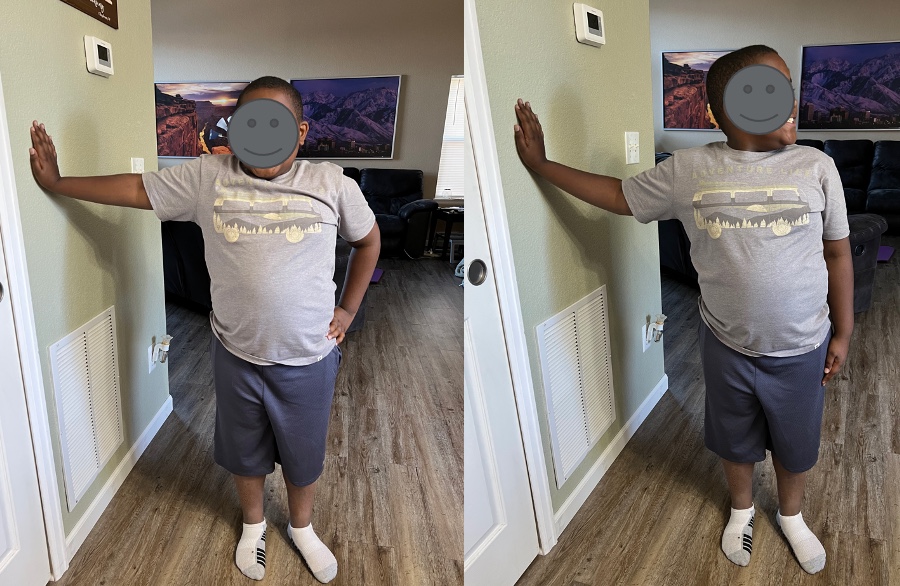
Figure 13. Example of a wall lean exercise.
The picture on my left is where his arm is straight, but as he turns his head, you see a little bit of weakness there and some flexion. Again, look for compensation like the collapse at the elbow. We can have the whole class push against the walls. "We need a bigger classroom. Everyone, push. Ready, go!" This works great for little kids.
- Unilateral side flexed to move you in a forward momentum
The army crawl pattern can be seen in Figure 14.
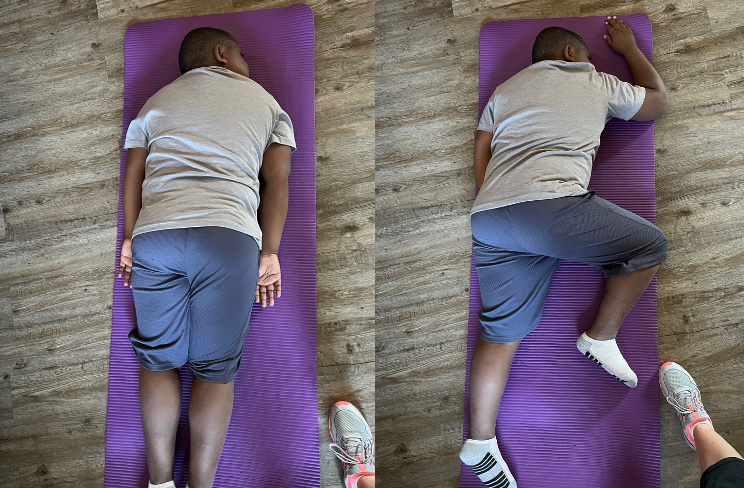
Figure 14. Example of an army crawl exercise.
We want to see a unilateral side flexed while the other is extended. straight pattern.
- Quad position and rock forward while looking side to side
The rocking horse is the client in a quadruped position and rocking forward and back and turning side to side.
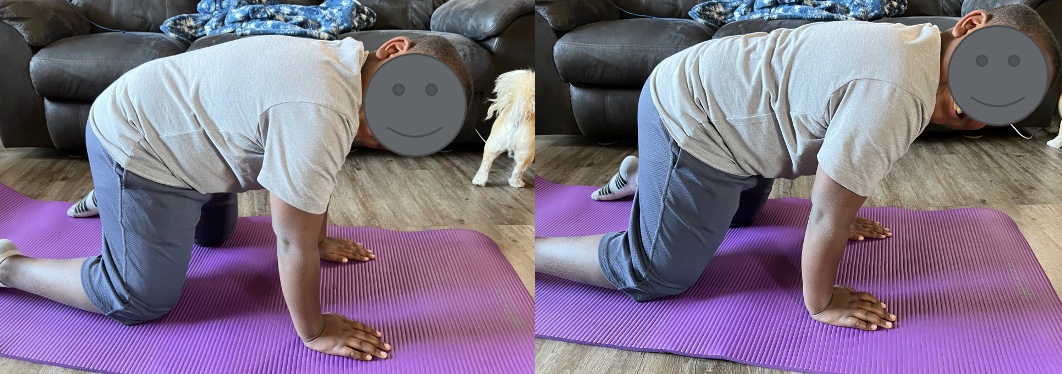
Figure 15. Example of a rocking horse exercise.
You want them to be able to turn their head with a flat back. You can see he had a little bit of curvature. We then want them to lean forward over their arms and back in a rocking pattern.
Spinal Galant Exercises
Doing floor angels are good for extension (Figure 16).
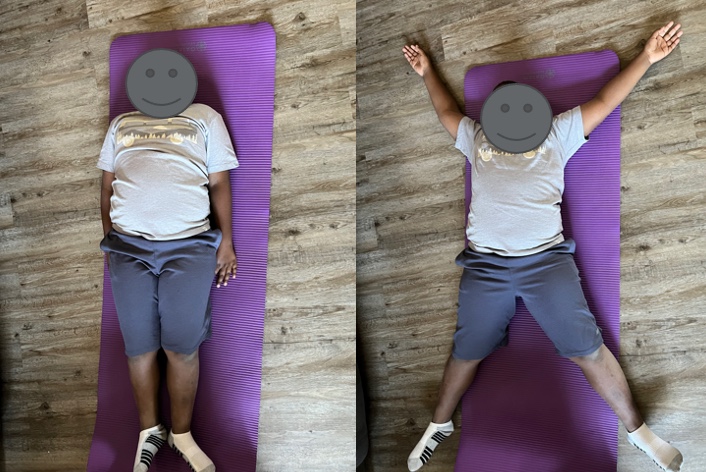
Figure 16. Example of floor angels.
They are flat on the floor and move slowly in a synchronized pattern. This is similar to the starfish I showed earlier, but this gives them input to the spine. When I was in the clinic, often, two of us would work together to move them through this pattern.
Tonic Labyrinthine Exercises
- Superman
- Lay flat on stomach and raise your arms, chest, and legs off the floor.
- Popcorn
- Lay on your back and bring up hands and knees and then pop out into extension
- Therapy ball passes
- Dead bug
Superman is where they lay flat on their stomach with their arms and legs lifted in extension. Figure 17 shows this.
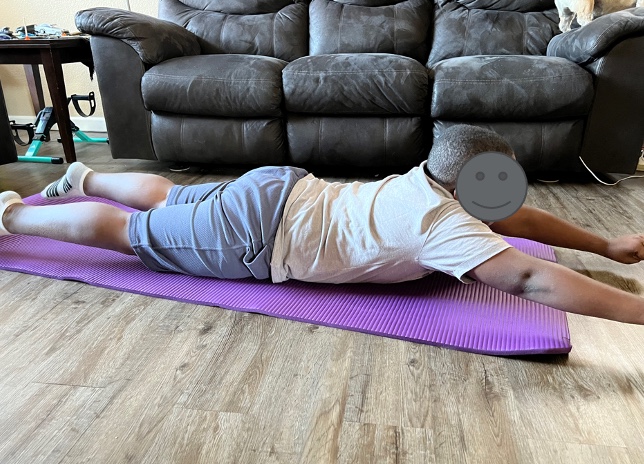
Figure 17. Example of superman exercise.
You want them also to pull up their chest and hold this pattern. You can pull up norms off the internet for holding times for this position. Figure 18 shows "dead bug," where their arms, legs, and chest are off the ground. Again, you want to see how long they can hold this position.
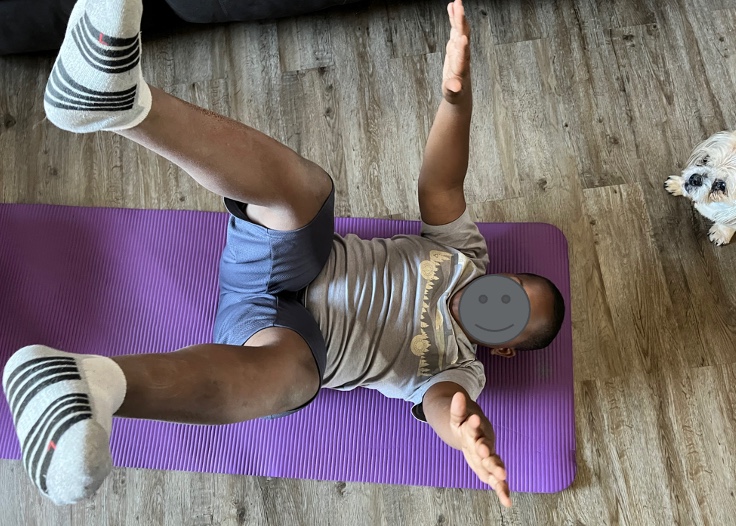
Figure 18. Example of dead bug exercise.
You can even add in spelling while they are holding these positions. "Here we go, M-O-U-S-E." Not only are you using a multi-kinesthetic approach, but you are also adding in movement opportunities.
STNR Exercises
- Giraffe Stretch
- Quad position, looking upwards, lean forward to weight bear through arms
Figure 19 shows a giraffe stretch.
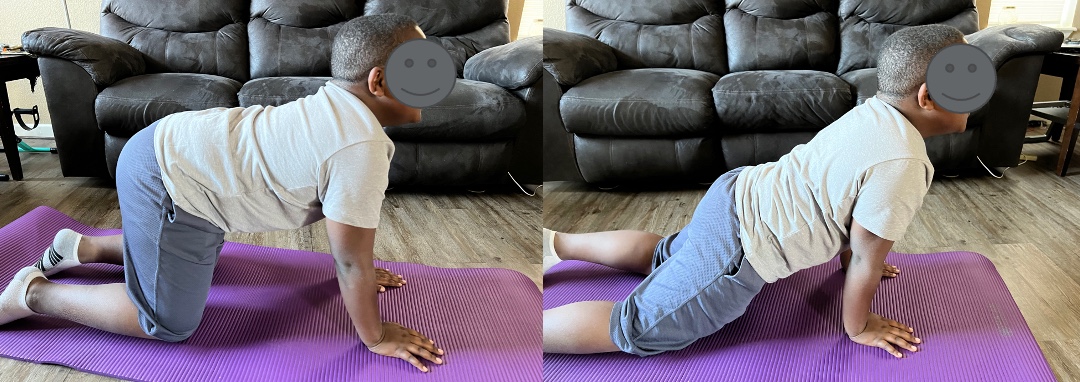
Figure 19. Example of a giraffe stretch.
You have them start again in quadruped with straight arms. You want them to lean forward with a forward head and weight-bear through their arms (second picture). If you notice, he has a wider base of support in his lower body. You want them to go nice and slow. Again, they can add in spelling with them leaning forward for C, back for A, and forward for T.
When to Implement?
- Morning mindfulness
- Sensory rotations
- Practicing spelling words
- Quick movement breaks between lessons or during long lessons
- After recess to reset the brain
When should we implement these activities? One time may be during morning mindfulness. In one STEAM school where I work, they do a daily mindfulness activity after announcements. They then talk the whole building through the activity.
You can incorporate these during sensory rotations. I have an advantage because I work in center-based classrooms. One of these activities could easily be incorporated into a center.
My favorite time is during spelling word practice. You can make these activities kinesthetic and multi-sensory.
These can be part of movement breaks between lessons or during long lessons. When supporting the teaching staff, we break up those big chunks of learning with movement to facilitate longer attention spans.
Lastly, we can use one as a quick reset after recess. They have busy bodies and are constantly moving. We want them to reset to get them ready to learn.
Summary
There are many great tools and videos out there, like GoNoodle and Brain Gym. You want to work with the teachers to get their buy-in. If they want to do it, then they are going to use it for the benefit of all of our kids. By strategically helping them to embed some of these exercises, it will help with some of those bigger picture pieces and some of the underlying skill deficits.
I want to thank you so much for joining me today.
Questions and Answers
Should we, as therapists, do these activities with babies?
We can give parents ideas for movement opportunities, like tummy time, as this will incorporate many of these movements.
One of the criticisms is that reflex integration therapy techniques are not based on research.
There is limited research, but I feel like we are seeing it more and more. Masgutova Neuro Reflex Integrative has many resources. There is no harm in helping teachers provide more strategic movement opportunities.
References
Bilbilaj, S., Gjipali , A., & Shkurti, F. (2017). Measuring primitive reflexes in children with learning disorders. European Journal of Multidisciplinary Studies, 2(5), 176–189. https://doi.org/10.26417/ejms.v5i1.p285-298
Chandradasa, M., & Rathnayake, L. (2019). Retained primitive reflexes in children, clinical implications, and targeted home-based interventions. Nursing Children and Young People. https://doi.org/10.7748/ncyp.2019.e1132
Fisher, A. G. (2013).Occupation-centred, occupation-based, occupation-focused: same, same or different? Scand J Occup Ther., 20(3):162-73. doi: 10.3109/11038128.2012.754492. Epub 2013 Jan 14. PMID: 23311311.
Gieysztor, E. Z., Choińska, A. M., & Paprocka-Borowicz, M. (2018). Persistence of primitive reflexes and associated motor problems in healthy preschool children. Archives of Medical Science: AMS, 14(1), 167–173. https://doi.org/10.5114/aoms.2016.60503
Gillen, G., Hunter, E. G., Lieberman, D., and Stutzbach, M. (2019). AOTA’s Top 5 Choosing Wisely® recommendations. Am J Occup Ther, 73(2):7302420010. https://doi.org/10.5014/ajot.2019.732001
Konicarova, J., & Bob, P. (2012). Retained primitive reflexes and ADHD in children. Activitas Nervosa Superior, 54(3-4), 135–138. https://doi.org/10.1007/bf03379591
Melillo, R., Leisman, G., Machado, C., Machado-Ferrer, Y., Chinchilla-Acosta, M., Kamgang, S., Melillo, T., & Carmeli, E. (2022). Retained primitive reflexes and potential for intervention in autistic spectrum disorders. Frontiers in Neurology, 13. https://doi.org/10.3389/fneur.2022.922322
Occupational Therapy Practice Framework: Domain and Process—Fourth Edition. (2020). Am J Occup Ther, 74(Supplement_2):7412410010. https://doi.org/10.5014/ajot.2020.74S2001
Ortego, L., Pelican, E., Callaba, L., & Marks, T. (n.d.). An investigation of the effects of MNRI techniques on the educational performance of kindergarten students [Review of An Investigation of the Effects of MNRI Techniques on the Educational Performance of Kindergarten Students]. Svetlana Masgutova Educational Institute for Neuro-Sensory-Motor and Reflex Integration, SMEI, 142–150. Retrieved October 4, 2022, from https://masgutovamethod.com/_uploads/_media_uploads/_source/Scientific-Research-Behind-MNRI-03.20.15.pdf
Citation:
Paben, M. (2023). Naturally build reflex activities into the school day. OccupationalTherapy.com, Article 5579. Available at www.OccupationalTherapy.com
